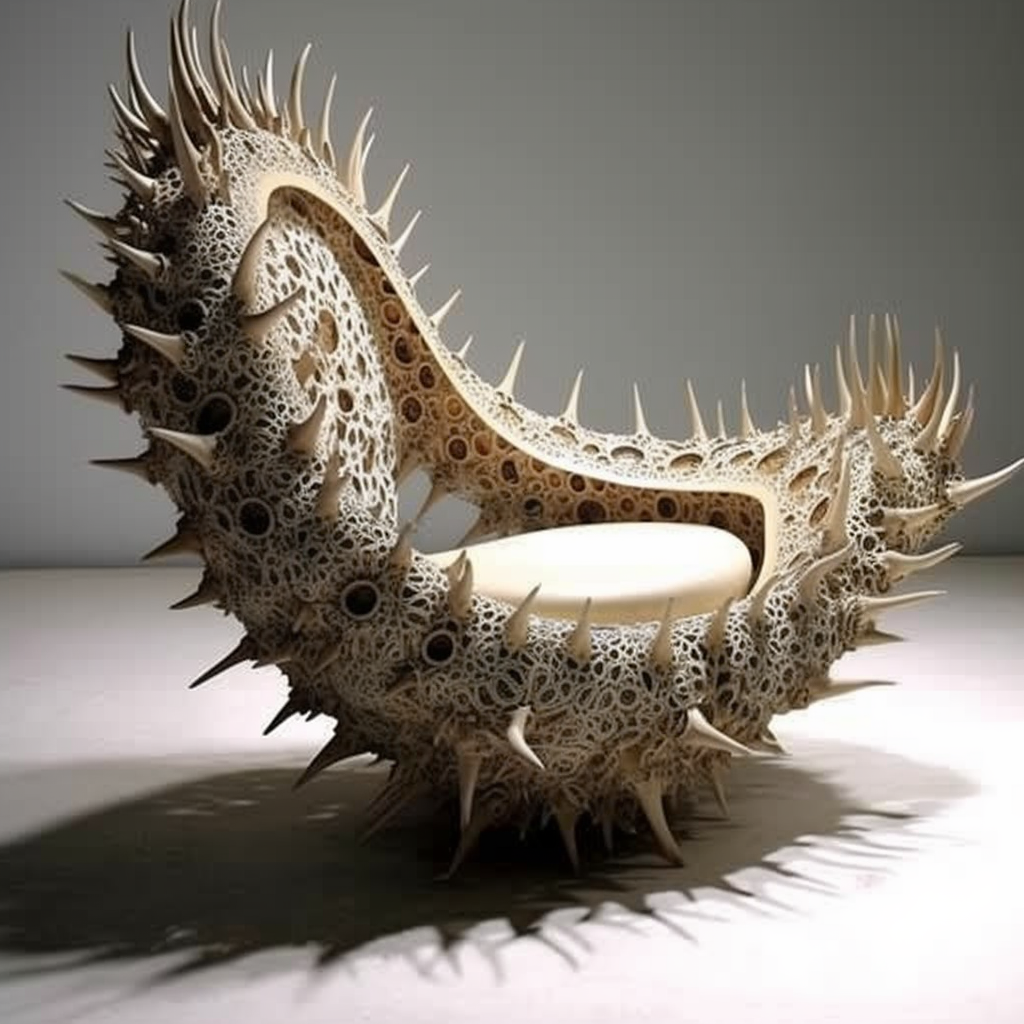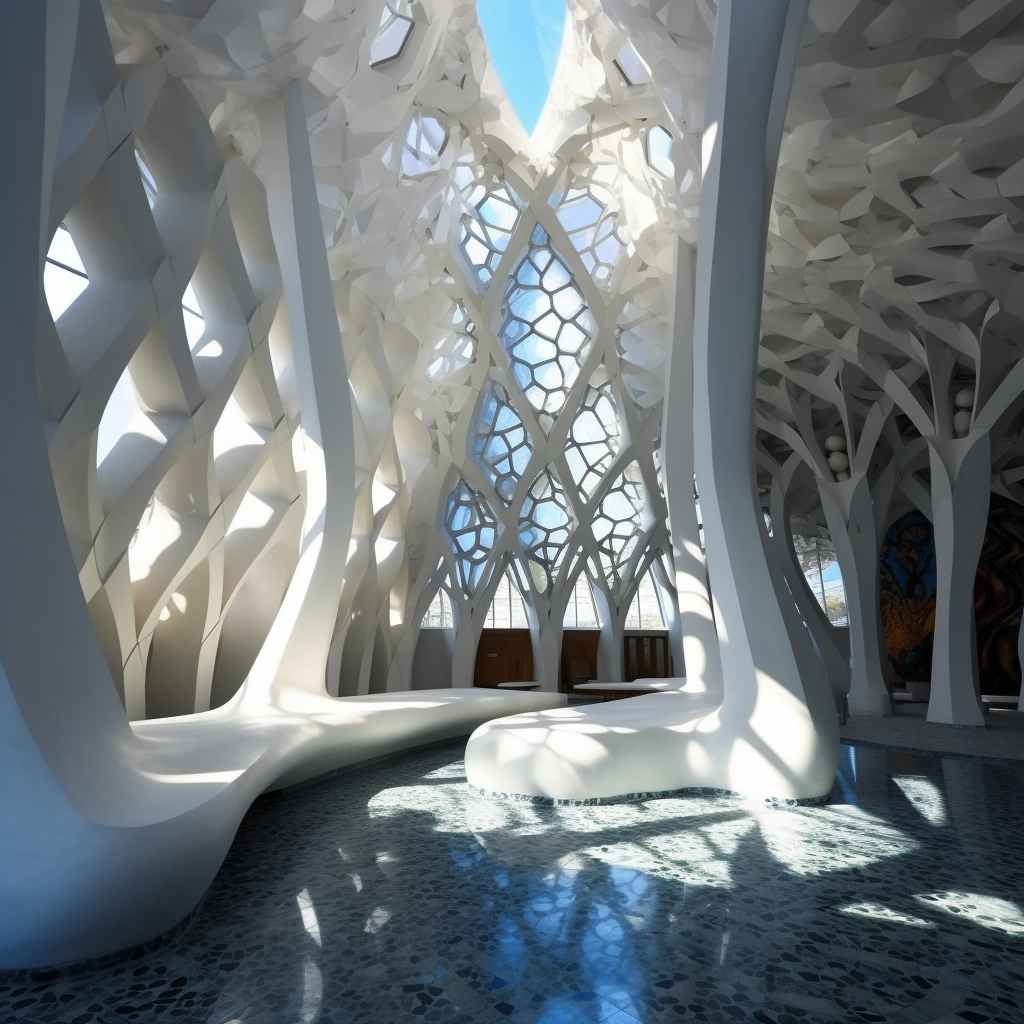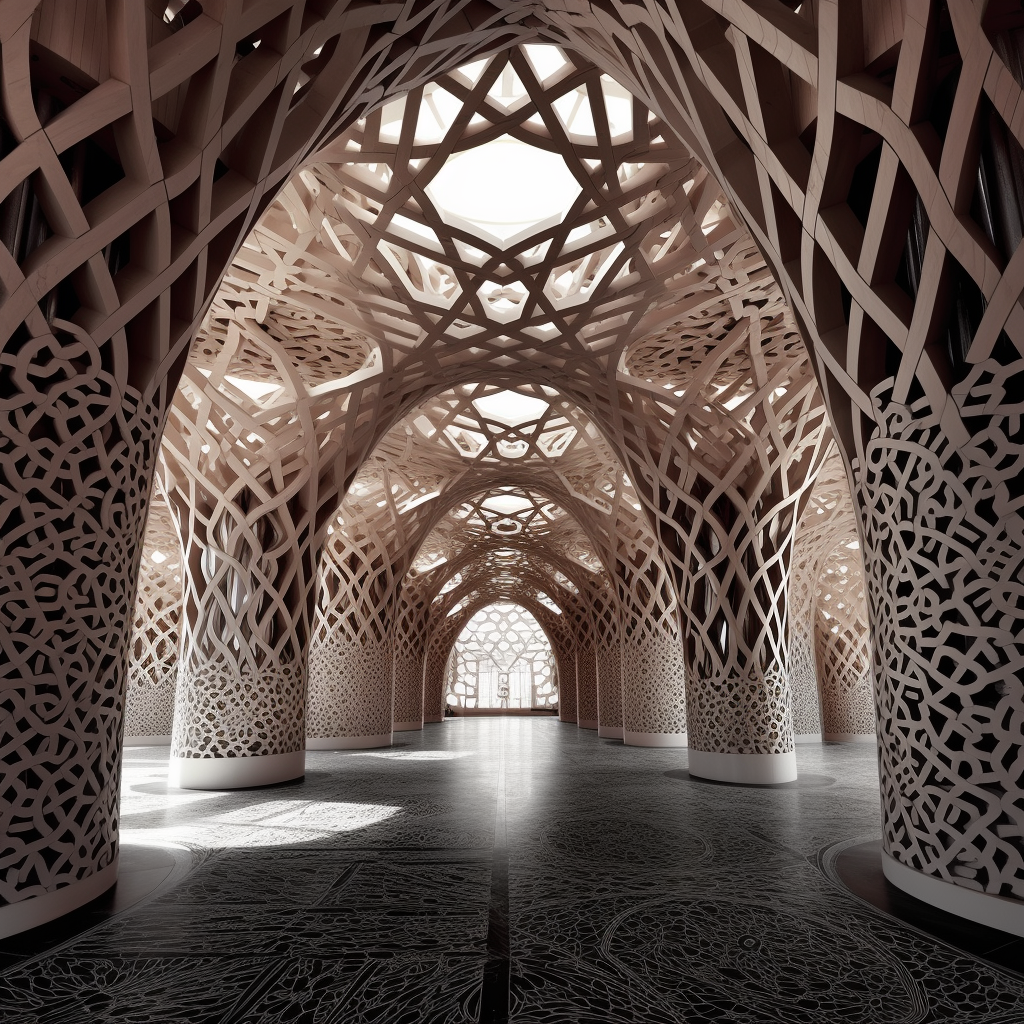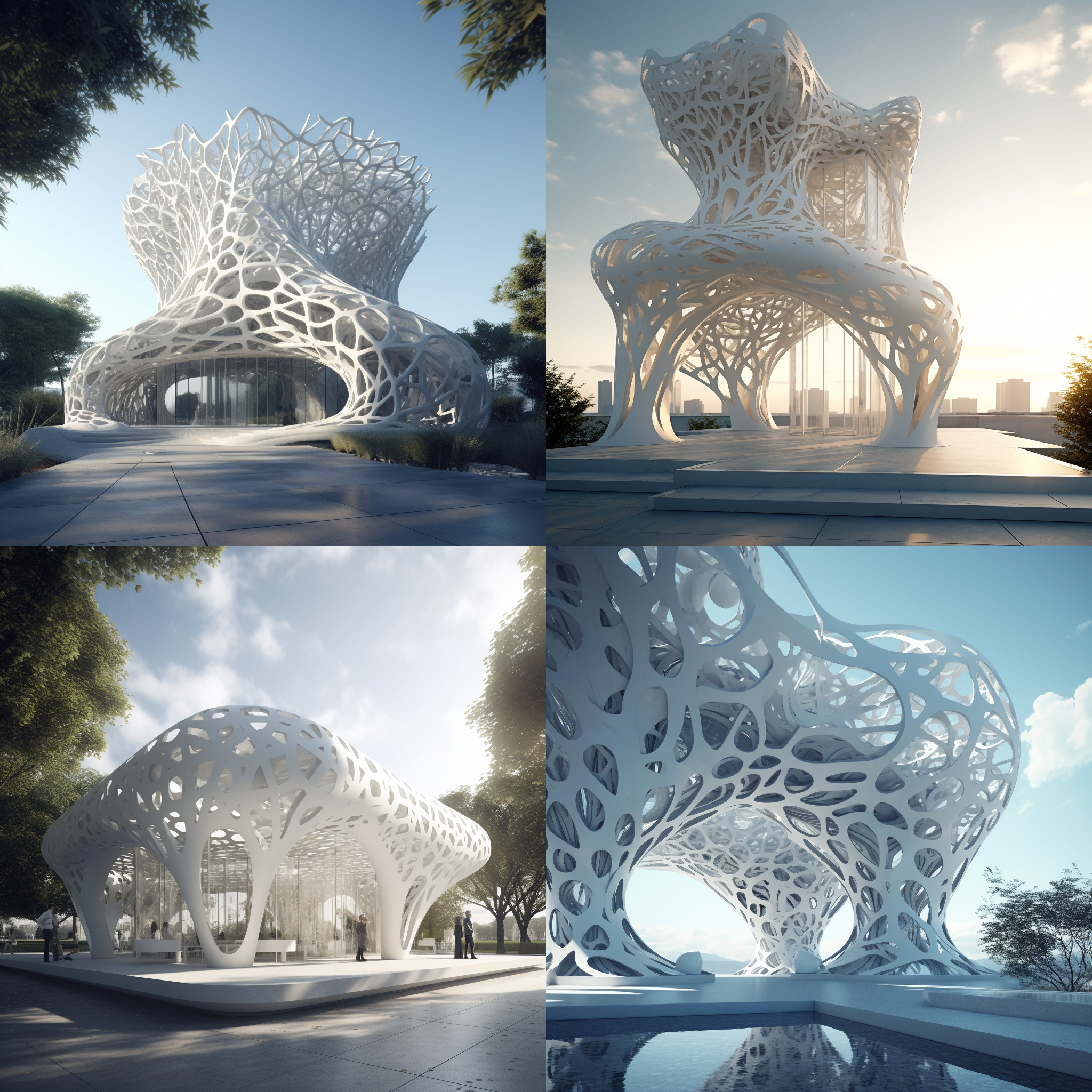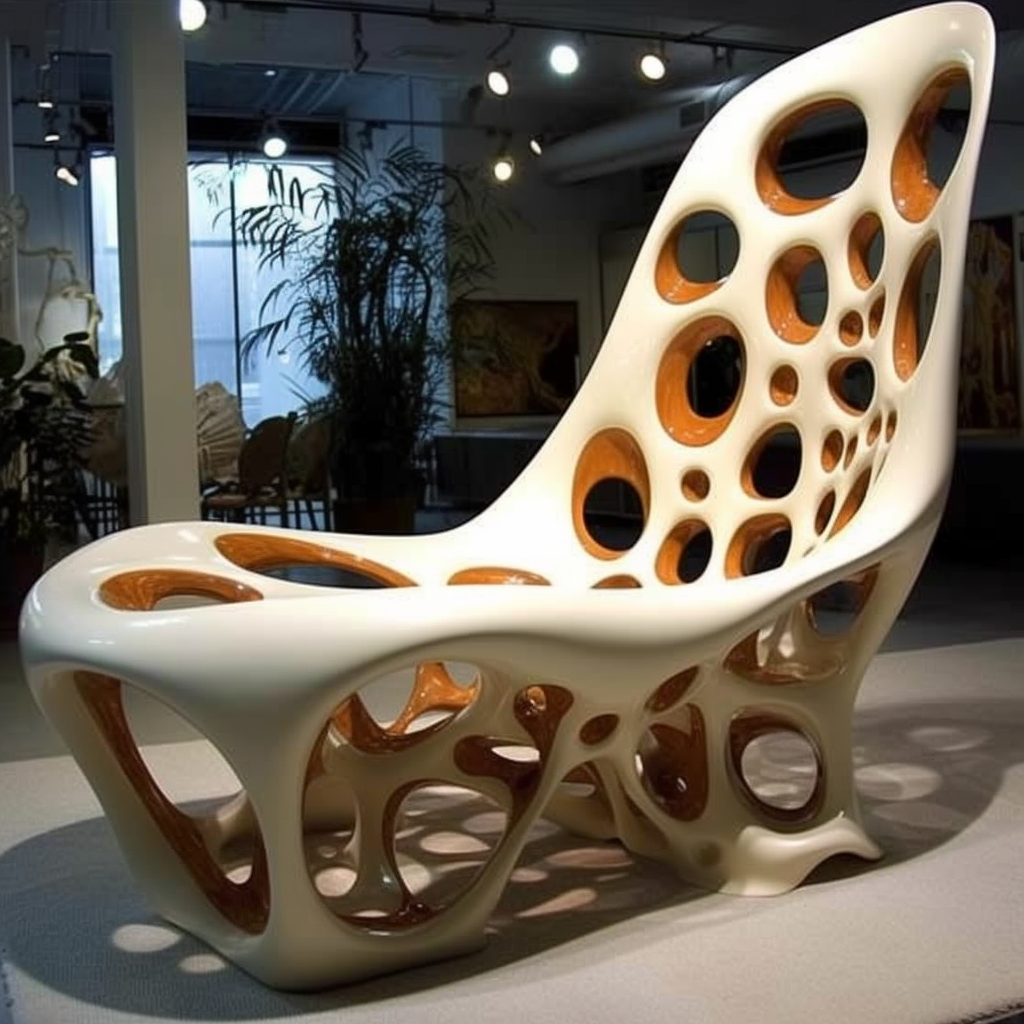What is Biomorphic Lumia?
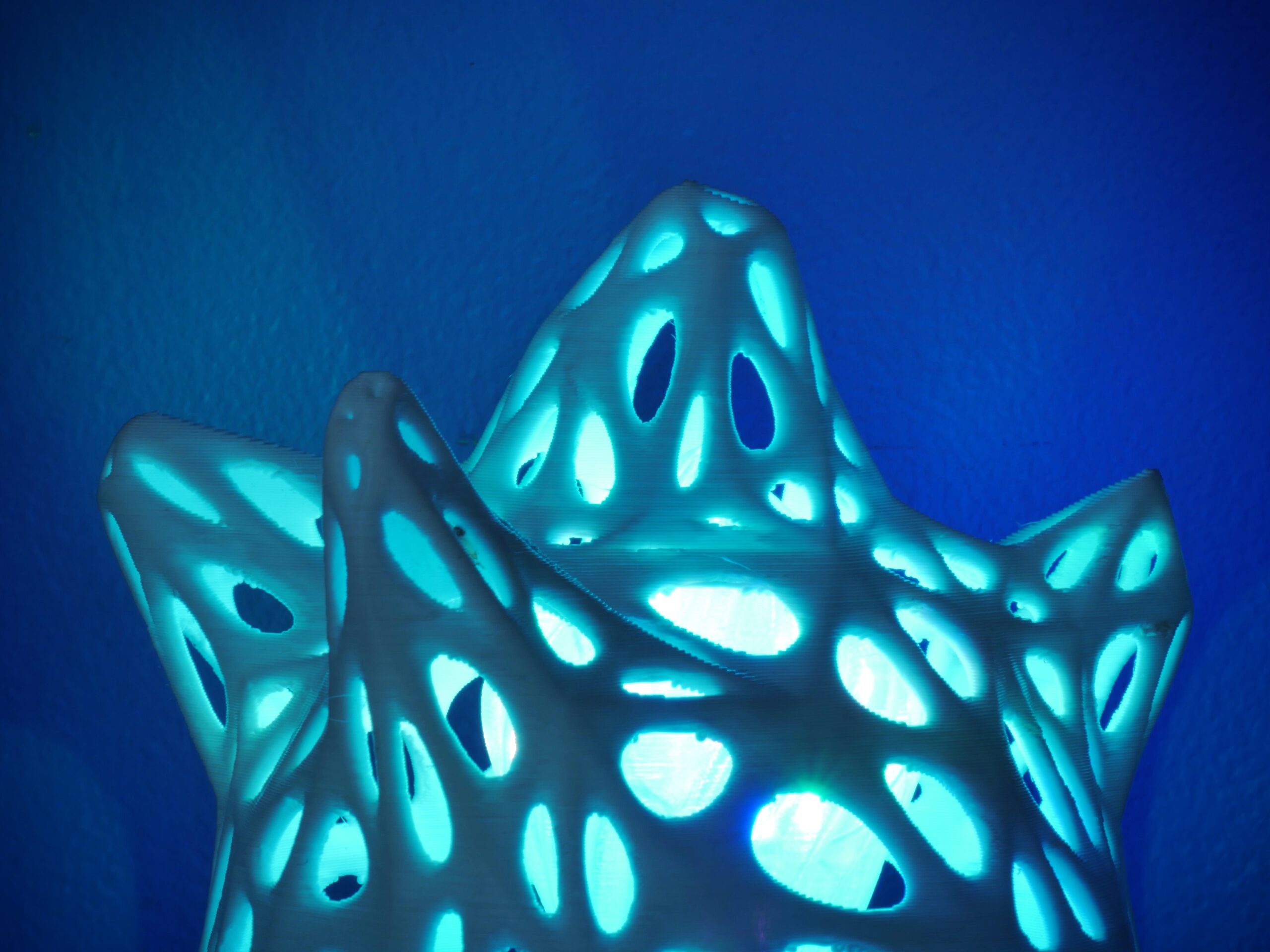
Biomorphic: adj. resembling or suggesting the forms of living organisms.
Lumia: n. The use of light patterns as an expressive art form.
Biomorphic Lumia is the art of illuminated sculpture that is inspired by natural forms. These works illuminate spaces to inspire joy throughout the night. The objects are 3D printed and fitted with LED lights which sparkle and animate.
More about Biomorphic Design
Biomorphic design is an approach to design that draws inspiration from natural forms, shapes, processes, and patterns found in the biological world. It seeks to replicate the elegance, efficiency, and functionality of nature in human-made objects, architecture, and systems. This design philosophy is rooted in the belief that nature’s designs have evolved over millions of years to be highly efficient and adapted to their environments, making them a rich source of inspiration for creating innovative and sustainable human designs.
Key characteristics of biomorphic design include:
- Organic Shapes and Patterns: Biomorphic design often incorporates organic, flowing, and curvilinear shapes and patterns that emulate those found in plants, animals, and natural landscapes.
- Functionality: Designs inspired by nature tend to prioritize functionality, just as biological structures are optimized for specific functions. This can lead to more efficient and purpose-driven designs.
- Adaptation to Environment: Natural organisms are well-adapted to their environments. Biomorphic design seeks to understand and replicate these adaptations to improve the performance of human-made objects in various contexts.
- Sustainability: Nature is a master of sustainability. Biomimetic designs often aim to be environmentally friendly, resource-efficient, and ecologically responsible.
- Innovation: Observing and studying natural systems can lead to innovative solutions in design, technology, and engineering that might not have been conceived through traditional methods.
- Aesthetics: Biomorphic design can result in visually captivating and aesthetically pleasing outcomes due to the inherent beauty found in nature’s forms.
- Interdisciplinary Approach: Achieving successful biomorphic designs often involves collaboration between various disciplines, including biology, engineering, architecture, and design.
Examples of biomorphic design can be seen in various fields:
- Architecture: Buildings and structures that incorporate organic shapes, natural ventilation systems, and energy-efficient designs inspired by the way plants and animals adapt to their environments.
- Product Design: Consumer products like ergonomic chairs, car designs, and household items that are shaped to enhance functionality and comfort based on human anatomy and natural forms.
- Materials Science: Creating materials with properties inspired by natural substances, such as self-healing materials that mimic the way biological tissues repair themselves.
- Transportation: Designing vehicles with improved aerodynamics and fuel efficiency by mimicking the streamlined shapes found in nature.
- Urban Planning: Designing cities and communities that work with the natural environment, incorporating green spaces, efficient water management systems, and sustainable infrastructure.
Biomorphic design not only offers aesthetically pleasing solutions but also promotes sustainability and innovation by tapping into the deep well of natural wisdom that has evolved over eons.
Related terms: biomimetic, biomimicry
Biomorphism is a sub-category of biomimicry. “Biomimicry” is a broader concept that involves functional innovation based on nature’s designs and principles, while biomorphic design is a specific design approach that seeks to capture the visual essence of nature’s forms in human-made creations. Both concepts are rooted in the idea of learning from and being inspired by nature, but they manifest in different ways and have different focuses.
The Biomorphic Lumia Project
This project is by J-Walt, a media artist who has directed animated movies, written software, designed theme park attractions, performed live visual shows, and composed music. This project is a combination of J-Walt’s passion for natural forms as well as his love of light art. He has long created biologically-inspired artworks in his images and videos. And now he creates similar forms to populate the real world.
Biomorphic Concepts
Here’s some AI generated concepts of biomorphic design applied to architecture and furniture. The features appear to be cellular and have a natural feel to them. These features are how biological creatures grow. It’s only recently that we humans have been able to include these flowing lines in our designs.
